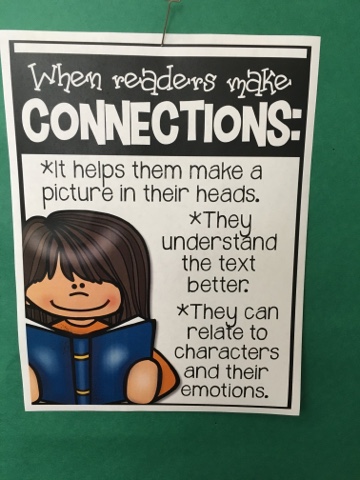We had another great week Rooted in Reading! We worked on adjectives, -r controlled words and visualizing the text.
On Monday we started off with an intro to adjectives. We learned that adjectives are words that describe nouns. They created a bubble map with adjectives that describe themselves. To learn about visualization, we read a poem and then drew what our mental images are. I explained that good readers can visualize in their minds what is happening in the text to better understand the story. Our focus story for the week was "The Salamander Room." For our first read I did not show them the pictures. Then in their spirals they had to draw what they visualized after we read.
On Tuesday we continued our work with adjectives, discussing that adjectives can describe the size, shape, color, texture of a noun. In their spirals they sorted adjectives into the correct categories. We also continued practicing visualization with another poem, but this time we learned that our mental images change throughout a story. They read a poem that had 5 stanzas, and after each stanza they drew their mental pictures. They were able to see how their mental images changed throughout the story. We read "The Salamander Room" for the second time and I showed them the pictures.
On Wednesday it was time to learn about salamanders. We read a nonfiction story and they watched a video on YouTube. After the story and video they had to write one fact about salamanders on a sticky note and add it to the class anchor chart. Then we went over the facts and they recorded four in their spirals.
On Thursday we took our facts and turned it into a paragraph. Each week I am teaching them one new writing skill. Last week we discussed starting a paragraph with an introduction sentence. In their paragraph last week they had to include the intro sentence. This week I taught them that their sentences had to have at least 7 words. We practiced taking a short sentence and making it "longer and stronger" by adding more detail to it. They are starting to learn how to combine sentences to make them more meaningful rather than just writing a lot of short sentences. This will take a lot of practice! When they finished they got to make a cute little salamander to go with their writing.
We started with a basic sentence, then brainstormed how we could make it longer and stronger.
We ended our week with our second parent reader! Thanks Mrs. Buchanan! If you haven't signed up yet, please do!
Here's a look at what's coming up this week:
Contractions, verbs, and inferencing
Spelling words: haven't, it's, he's, I'm, didn't, who's, she's, can't, isn't, aren't, hadn't, I'll




















































